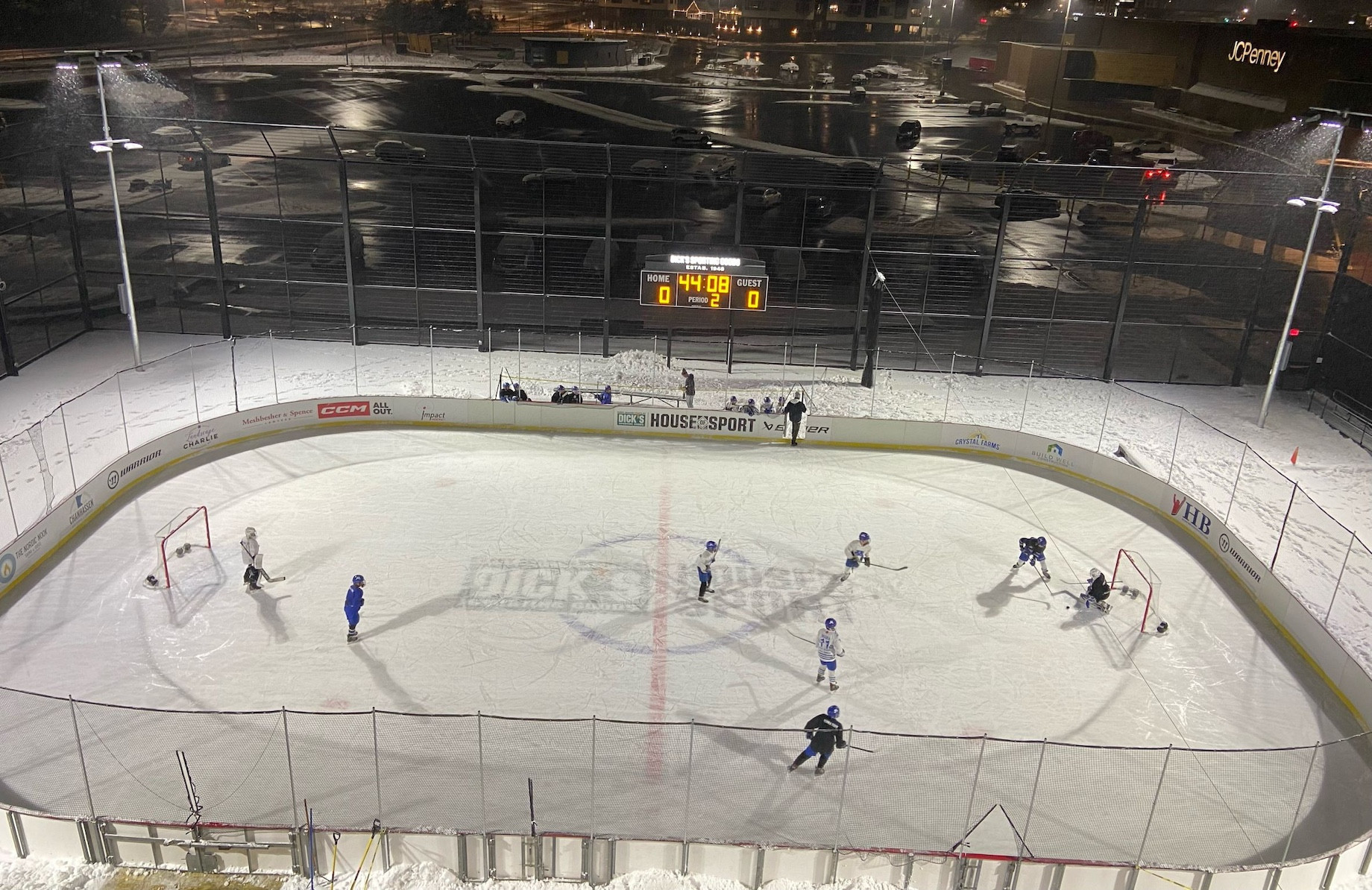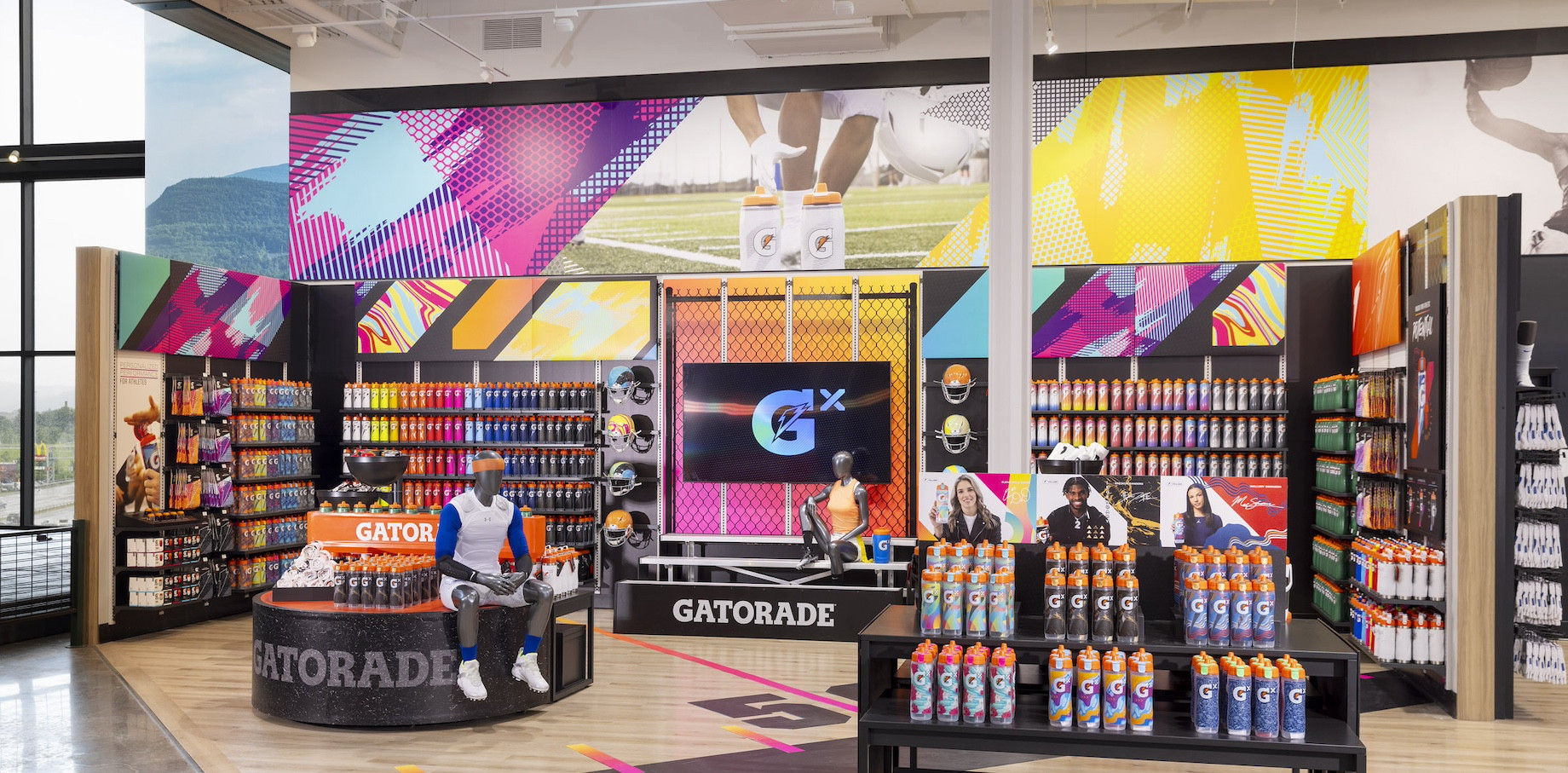Eleven months ago, Dick’s Sporting Goods decided to shelve its fledgling Field & Stream chain and bulk up its new House of Sport portfolio. Dick’s is building the concept on experiences, from scaling a wall or hitting a golf ball inside to kicking a soccer ball or ice skating outside. So far, Dick’s has opened 12 House of Sport locations: four new stores and eight conversions of side-by-side Dick’s Sporting Goods and Field & Stream stores. The company wants to open 75 to 100 House of Sport locations over the next five years and is targeting vacant mall anchor space as part of the strategy, said Vincent Corno, senior vice president of real estate at Dick’s.
“We’ve had a lot of success in building up a pipeline to deliver 20 House of Sport stores per year, and I think we’ll hit that stride in 2025,” said Corno, who has served as an executive at handful of public and private retail real estate companies, as well as Saks Fifth Avenue and The May Department Stores Co. He discussed the House of Sport concept, mall redevelopment and more with Commerce + Communities Today contributing editor Joe Gose.

You’ve had quite a career in the retail real estate business. How did you get started?
I’m a St. Louis native and attended Saint Louis University. I completed undergraduate and law school studies there. When I finished law school, I went to work for The May Department Stores Co., which was based in downtown St. Louis. We had Filene’s in Boston, Foley’s in Denver and Houston, Meier & Frank in Portland, [Oregon], Robinsons-May out in California and a number of other regional banners; we covered a lot of ground before Macy’s acquired us. I cut my teeth initially on lawyering reciprocal easements and new department store deals, and then I migrated over to the business side. It was a great learning ground, no question.
“What’s really interesting about the sporting goods category is its experience aspect. What better merchandise category is there to leverage experiential retail?”
The House of Sport stores have a lot of interactive features — maybe none that are getting more attention than The Field outdoor turf areas. Tells us about that idea.
What’s really interesting about the sporting goods category is its experience aspect. What better merchandise category is there to leverage experiential retail? You go to Dick’s to buy a soccer ball, put on a pair of cleats or check out a lacrosse stick, so the idea was: Let’s give them a venue to go outside to try out and experiment with the equipment to see if it’s a good fit for them. We have a track that goes around The Field, so you can run in a pair of track shoes to see how they feel. In some cases, we’ll convert The Field to an ice rink in the winter.
How has The Field been received?
We weren’t anticipating this, but the communities have really embraced the fields. They’re almost a quasi-public amenity. We sponsor birthday parties for kids. High schools and homeschooled children use them for physical ed classes. And college intramural teams have asked how they can use the fields even after we’re closed for five-on-five soccer or lacrosse matches. We’ll also have open play for one or two hours in the afternoon, where mom can bring the kids. It’s like a public park in some regards, but it’s differentiated; it’s contained and secure. It’s the link between the retail environment and community involvement that we think is so important to the model.
Where possible, you have second-floor observation windows that overlook The Field for parents. Was that always part of the plan?
It almost happened by accident. In Minnetonka, Minnesota, when we installed the ice rink, there was a glass area there by design, but we didn’t specifically make it an area where people could hang out. To our surprise, when the Mini Mite hockey players were out on the rink, mom and dad would come into the store and congregate around the window, so we made some changes to the physical plant to cater to that. When we were walking the Oakdale Commons in Binghamton, New York, store a few months before its grand opening, [Dick’s executive chair] Ed Stack realized there was an opportunity to create a special gathering place overlooking The Field there. He was spot on, and we changed things and put in a large glass observation area late in the construction process. So we’ve been adaptable, and we’re expanding the idea.

A view from the observation window of the Mini-Mites hockey players, ages 5 and 6, at the Minnetonka, Minnesota, House of Sport. At the experience-focused concept, a turf and track area called The Field enables shoppers to try sporting goods and to play. At certain locations, The Field transforms into an ice rink for the winter.
Another House of Sport feature is the Co-Lab. What is that?
These are essentially collaborations with certain vendors that are in highly visible, optimally positioned pads within our stores. They’re a real opportunity to work with vendors to come up with a showcase that is oftentimes creative. We’ve done Co-Labs with the likes of Gatorade and Yeti, and in Johnson City, New York, we’re doing Carhartt.

Gatorade Co-Lab in the Johnson City House of Sport, near Binghamton, New York
Do you have any plans for your more conventional stores?
Yes, we’re reinventing our 50,000-square-foot workhorse locations to incorporate the design and feel of the House of Sport. We’ve recently done that in South Bend, Indiana, and Bel Air, Maryland, to name a few locations. While we envision tremendous growth with House of Sport, we’re making sure that we have consistency in the shopping experience and brand representation in each of the stores. This is really a large-scale overhaul and upgrade of our bricks-and-mortar platform.
You’ve helped turn around old malls by taking vacant anchor space, as at Oakdale Commons, pictured at top, How are you approaching such opportunities?
It’s not a surprise to old folks like me because we’ve seen it time and time again that if you put relevant anchors in these malls, you draw traffic and the malls become as active and as vibrant as they were when they were originally conceived. We’ve seen it firsthand at Oakdale, but mall redevelopment is a case-by-case approach where you’ve got to look at what’s going on in the broader market: Where are the holes, and where can you fill them? It’s not a circumstance where one size fits all. We frequently see proposals to redevelop malls or portions thereof, which often include introducing mixed-use elements like multifamily. But what Dick’s offers is a conventional retail solution for a conventional retail issue, namely empty anchor boxes. And frankly, there are a lot of them across the country. For us, that’s a real opportunity to get into some of the best malls in the country where historically there wasn’t much availability because viable and strong retailers occupied the anchor space. We’re doing it at Ross Park Mall in suburban Pittsburgh, where we’re replacing a vacant Sears. The timing is perfect because we want to grow House of Sport at scale.
“What Dick’s offers is a conventional retail solution for a conventional retail issue, namely empty anchor boxes.”
What do you think of mall redevelopment plans that include multifamily or other uses?
Mixed-use adds an interesting element to these malls, but I have a concern with the notion that we should add mixed-use to every mall in this country. These are historically the retail locations that have served a community’s retail needs, and mixed-use is not overwhelmingly compelling in terms of supporting the retail. If you have, say, 700 apartment units attached to a mall, you may see more foot traffic and food-and-beverage tenants may benefit more directly, but do Nordstrom or Macy’s see a pickup in traffic? Frankly, I don’t think there’s enough critical mass. The markets that they serve are so large that, relatively speaking, the multifamily doesn’t really move the needle. I’m hopeful that we don’t let this whole drive for multifamily or other uses be to the detriment of the mall’s visibility, accessibility, sightlines and all the other elements that made it a great retail site. And convenient parking is a fundamental that will never change; successful brick-and-mortar retailers provide convenient surface parking. On occasion, deck parking will work, but it is typically less desirable.
By Joe Gose
Contributor, Commerce + Communities Today